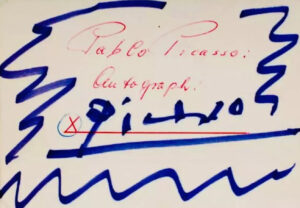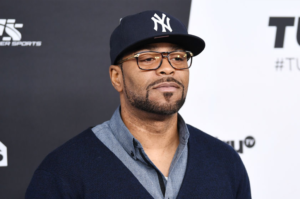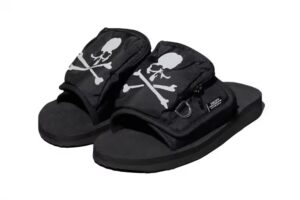A South of France Dream in West Hollywood
In a sunlit corner of West Hollywood, where style pulses through every sidewalk and the scent of citrus lingers in the spring air, Jacquemus is reimagining retail yet again. From April 24 to 27, the French fashion house will host its first-ever Jacquemus Market at 8804 Melrose Avenue — a four-day immersion in color, joy, and cinematic simplicity. Part installation, part open-air fête, the event acts as a prelude to the grand opening of the brand’s first permanent boutique in Los Angeles, slated for the end of the month.
This isn’t merely a store launch; it’s a mood, an emotion, a carefully calibrated collision between Provence and California cool. For Jacquemus, a designer who has turned everyday objects into couture icons and countryside nostalgia into high fashion, the choice of Los Angeles — and specifically Hollywood — signals not just a new commercial frontier, but a cultural conversation.
An Open-Air Market with a Twist
The Jacquemus Market invites Angelenos into the brand’s playful universe through a rare blend of physical storytelling and experiential gifting. Upon arrival, guests are given a whimsical choice: a ticket for either a Yellow Flower Bouquet or Fresh Banana Ice Cream, both evoking the label’s signature palette and tactile charm. It’s a nod to summer in Provence — the scent of wildflowers, the creaminess of ripe bananas under the sun — but delivered with L.A. flair.
Yet this is Jacquemus, where even delight has layers. Hidden inside select tickets are “golden moments” — exclusive win cards that can be redeemed for special in-store prizes. Chief among them are two items emblematic of the brand’s whimsical-meets-functional ethos: the Rond Carré clutch in Jacquemus yellow, and a new cult piece from the house’s surprise collaboration with Timberland — a pair of sunny “La Bateau” 3-Eye Lug boat shoes.
This blend of nostalgia, gamefulness, and collector-tier exclusivity encapsulates Simon Porte Jacquemus’ retail strategy: a boutique shouldn’t merely house clothes; it should house wonder.
From Parisian Rigor to Californian Ease
Los Angeles marks Jacquemus’ fifth permanent boutique worldwide, after opening in Paris (Avenue Montaigne), New York (SoHo), London (Bond Street), and Dubai (Mall of the Emirates). But unlike the stone-and-brass severity of most flagship stores, the L.A. outpost embraces something breezier.
The Melrose space, designed in collaboration with long-time architectural partner OMA (Office for Metropolitan Architecture), is inspired by roadside fruit stands, pastel diners, and the geometry of LA strip malls. Oversized lemons, suspended palms, and tiled surfaces transform the store into a sensorial playground that references Southern California’s grocery culture as much as the Mediterranean’s lazy luxury.
Inside, minimalist ready-to-wear hangs alongside new iterations of the Chiquito and Le Bambino bags, draped in creamsicle hues and lemon-curd leathers. A micro-kiosk sells postcards, keyrings, and tiny soaps — all infused with Jacquemus wit.
It’s commerce softened by poetry.
Why Los Angeles — Why Now?
The expansion to Los Angeles is as much a strategic decision as an emotional one. For a brand rooted in sunshine and sensuality, L.A. represents not just another luxury market, but a like-minded landscape. “Los Angeles is the only other place where I feel the same light as I do in the South of France,” Jacquemus once told Le Monde. “It’s the city where everything slows down, and yet where everything happens.”
In commercial terms, it’s savvy. Los Angeles is now the second-largest luxury market in the United States, with a customer base that is younger, more casual, and more inclined toward experiential retail. This aligns with Jacquemus’ growing Gen-Z following, who crave a brand that doesn’t take itself too seriously.
Moreover, the brand’s playful minimalism — oversized buttons, towel-texture polos, shoes shaped like fruit crates — fits comfortably into L.A.’s aesthetic melting pot, where streetwear, wellness, and genderless fashion merge on daily sidewalks.
The Banana and the Boat Shoe: Product as Story
The items given away or sold during the market weekend are more than just marketing props; they are narrative artifacts. The banana ice cream, for instance, references not only the palette of past Jacquemus campaigns but also the designer’s 2020 collection, L’Année 97, which featured fruit-forward prints and childlike iconography.
Meanwhile, the Timberland “La Bateau” shoe marks one of the brand’s most significant footwear collaborations to date. Reworking Timberland’s 3-Eye Lug — a staple of preppy, nautical Americana — Jacquemus transforms it into a sun-drenched objet d’art. The result is a boat shoe that’s been stripped of its yacht-club stiffness and dipped in lemon sorbet.
In many ways, it’s the perfect metaphor for Jacquemus’ approach: recontextualize the familiar into something eccentric, elegant, and disarmingly sincere.
Community, Content, and Contagion
Of course, no modern fashion event is complete without its content pipeline. The Jacquemus Market is designed to be photographed. Bouquets in branded paper sleeves. Ice cream melting against blue skies. A Rond Carré clutch cradled by a terrier in a straw tote. All of it Instagrammable, but also deeply on-brand.
Jacquemus has always relied on viral resonance. His Le Chiquito micro-bag became a global sensation not because of function, but because it offered a surreal twist on luxury — a punchline in handbag form. By contrast, the Los Angeles installation leans into emotional contagion: it’s not just cute, it’s cheerful, in a way fashion rarely permits itself to be.
And it builds community. The brand’s past events — from lavender fields to pink lake runways — weren’t fashion shows so much as happenings. With the Jacquemus Market, it invites Angelenos to play, taste, shop, and feel something.
Retail in the Age of Immersion
Jacquemus is part of a broader shift in retail — one where brick-and-mortar isn’t dying but mutating. In 2025, immersion sells. Consumers are tired of sterile luxury. They want spaces that act as sanctuaries, stages, or playgrounds.
Compare this with similar recent rollouts: Loewe’s Paula’s Ibiza surf shack in Malibu, Gucci’s botanical speakeasy in Seoul, or Aimé Leon Dore’s espresso bar-meets-gallery in New York. All of them collapse the distance between consumer and brand mythos. Jacquemus goes further by collapsing retail and romance.
In Hollywood — a city obsessed with performance — Jacquemus becomes both set and story.
A Hollywood Ending, or a New Beginning?
The temporary Jacquemus Market will close on April 27, but the boutique it prefaces will remain — a lemon-scented fixture in the city’s luxury circuit. And it may only be the beginning. Rumors are already swirling about potential outposts in Tokyo, Madrid, and even São Paulo.
The question isn’t whether Jacquemus can expand. It’s whether it can scale intimacy. The brand’s magic lies in its ability to create personal, emotional connections — whether through a tiny handbag, a roadside flower stall, or a yellow-wrapped ice cream cone.
If Jacquemus can continue to craft experiences that feel more like memories than transactions, then it may have cracked the code of 21st-century fashion retail.
In a world of cold commerce, it dares to be warm.
No comments yet.









